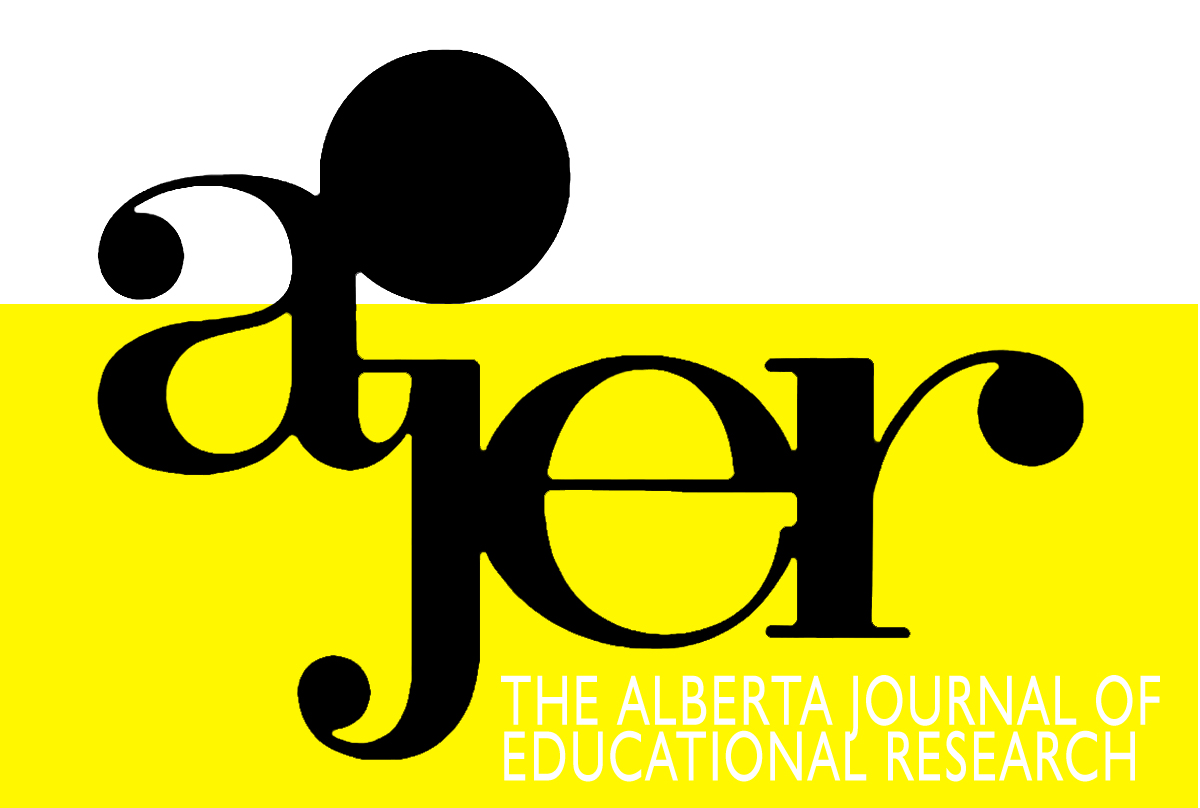Watching Bald Eagles Change Shifts: Seeking Digital Curriculum Access Across Canada
DOI:
https://doi.org/10.55016/ojs/ajer.v57i3.55499Keywords:
technology affordances, knowledge mobilization, health literacy, body image, pan-Canadian curriculum, knowledge translationAbstract
There is an inconsistency between a growing need for national research on issues of child and adolescent health and the wide range of diverse curriculum responses to health issues undertaken by individual provinces and territories in Canada. Measuring the effect of interventions is more difficult in this contradiction. In this study, the authors uncover a growing need for national research, knowledge mobilization, and the development of a common language and Internet protocols to enable sharing of health education initiatives using the affordances of technology. The authors find that in an era where difficult social challenges for children and adolescents require not only national but global attention, the current jurisdictional structures present significant and challenging barriers to accessing national and global expertise. These barriers will need to be addressed in order to maximize the affordances of digital technologies for knowledge mobilization toward the goal of coherent pan-Canadian health curriculum approaches.
Il existe une incohérence entre le besoin grandissant pour de la recherche nationale relative à la santé des enfants et des adolescents d’une part et la diversité dans la gamme de programmes d’études portant sur des questions relatives à la santé que proposent les provinces et les territoires au Canada. Ce manque de continuité rend plus difficile l’évaluation de l’effet des interventions. Dans cette étude, les auteurs révèlent un besoin grandissant pour la recherche nationale, la mobilisation des connaissances et le développement d’une langue commune et des protocoles Internet pour permettre le partage d’initiatives en éducation à la santé en profitant des capacités de la technologie. Les auteurs ont trouvé qu’à cette époque où les défis sociaux de taille auxquels font face les enfants et les adolescents nécessitent une attention non seulement nationale mais mondiale, les structures juridictionnelles actuelles posent d’importantes barrières redoutables à l’accès à l’expertise nationale et globale. Il faudra surmonter ces barrières afin de maximiser les capacités des technologies numériques en matière de mobilisation des connaissances pour arriver à des approches aux programmes d’éducation à la santé qui sont cohérents de par le Canada.
Downloads
Downloads
How to Cite
Issue
Section
License
UNIVERSITY OF ALBERTA COPYRIGHT LICENSE AND PUBLICATION AGREEMENT
If accepted, authors will be asked to sign a copyright agreement with the following points:
A. Where there is any inconsistency between this Copyright License and Publication Agreement and any other document or agreement in relation to the same subject matter, the terms of this Agreement shall govern.
B. This document sets out the rights you are granting in relation to publication of your article, book review, or research note entitled (the “Article”) through inclusion in the academic journal titled Alberta Journal of Educational Research (the “Journal”) published through the Faculty of Education, representing the Governors of the University of Alberta (the “Journal Editor”).
C. There will be no payment to you for this publication and grant of rights. In consideration of the agreement to publish the Article in the Journal:
1. You are warranting that:
- the content of the Article is your original work, and its content does not contain any material infringing the copyright of others; or, where the Article is not entirely your original work, you have obtained all necessary permissions in writing to grant the rights you are giving in this agreement;
- the content of the Article does not contain any material that is defamatory of, or violates the privacy rights of, or discloses the confidential information of, any other person;
- the Article has not been published elsewhere in whole or in part, and you will not allow publication of the Article elsewhere without the consent of the Journal Editor;
- the names of all co-authors and contributors to the Article are:
2. You agree to license the copyright in the Article to the Journal Editor, on a worldwide, perpetual, royalty free basis; and to the extent required by the terms of this agreement. You shall retain the right at all times to be acknowledged as the/an author of the Article.
3. You further agree that the Journal Editor has the entitlement to deal with the Article as the Journal Editor sees fit, and including in the following manner;
- The right to print, publish, market, communicate and distribute the Article and the Journal, in this and any subsequent editions, in all media (including electronic media), in all languages, and in all territories, ing the full term of copyright, and including any form of the Article separated from the Journal, such as in a database, abstract, offprint, translation or otherwise, and to authorize third parties to do so;
- The right to register copyright of the Journal;
- The right to edit the Article, to conform to editorial policy as the Journal Editor sees fit.
4. If any co-author or contributor to the Article does not sign this agreement, the Journal Editor reserves the right to refuse to publish the Article.



